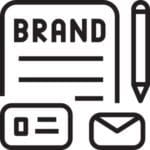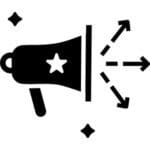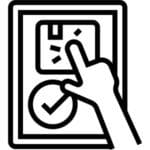What does your go-to-market strategy look like? Does it include a round table of experts tossing out ideas on how to brand and message your product? Have you compiled extensive market research to understand your consumer better?
What about brand testing? Have you worked through focus groups and consumer panels to meet the consumer’s “current” needs?
Even if you said yes to all three, there’s a good chance your brand strategy is falling short and is likely a result of insufficient brand testing. Inadequate testing can have disastrous consequences for an FMCG or CPG brand. A few examples include the following:
- Unnecessarily high customer acquisition costs through multiple marketing mediums.
- Delisting as a result of mediocre performance or inadequate same-store sales growth.
- Disappointing launch results for product variations and branded line extensions.
Brand testing is a must to succeed in any worthwhile retail channel (even DTC). So in this article, we will discuss brand testing from the SmashBrand perspective, which means we are talking to consumer packaged goods brands. Namely, we will unpack the meaning of brand testing and our methodology for including it as a part of a brand strategy. Here’s what you will learn:
- What brand testing really means to a CPG company.
- The fundamental brand tests that must happen before going to market.
- How to conduct CPG brand testing during product development.
- Common brand testing mistakes.
At the end of this article, you will be competent in the brand testing language and understand what is required to compete with fast-moving consumer products.
What is Brand Testing?
Brand testing (which proceeds the process of market-research-based strategy) exists during the evaluation process, where you determine the impact of a brand through qualitative and, most importantly, quantitative research. A brand test includes testing each visual element of the brand, including the theme, logo, packaging, design, and messaging. Essentially, any repeatable aspect of a brand that consumers will experience.
Brand testing results in a refined and improved presentation that provides actionable insights permitting brands to optimize for online and shelf performance and helping to enhance brand identity, customer loyalty, purchase intent, and, ultimately, revenue growth.
A brand test can occur during new product development, a rebrand, or a packaging refresh.
Fundamental Forms of Brand Testing
Testing occurs in many shapes and sizes. However, there are fundamental tests that every brand must go through to create a go-to-market-ready finished product. Here are the main tests that occur during the brand innovation process.
Brand Identity Testing

If you are new to the market brand, this isn’t a critical test, but you need to be aware of it anyways. A brand identity test evaluates each branding element for many of the popular CPG terms. A short list includes:
- Brand recall
- Brand personality
- Brand resonance
- Brand positioning
- Brand equity
Optimization and consistency are the keys to optimizing each brand identity element. Replicating your brand theme by matching your messaging and visuals within your marketing efforts and product presentations is critical to long-term growth. It’s how you go from brand awareness, where people see your brand, to genuinely remembering your brand.
Consistency is a vital element of nurturing a strong brand identity. Suppose consumers have past experiences with your brand through marketing or purchases. In that case, they should easily recognize a brand name and its assets across all touchpoints, including packaging, advertising, and social media. Testing the consistency of branding elements involves evaluating whether brand messaging, designs, and other elements are aligned across all channels and memorable for existing customers.
Brand Perception Testing

Perception is less about awareness and more about what consumers feel and understand about your brand. Brand perception testing is a necessary part of brand testing. Perception tests evaluate how consumers perceive a brand. The process traditionally involves a focus group (hopefully narrowed down to your target audience) where they analyze the audience’s demographics, psychographics, and behaviors towards a brand. In the best-case scenario, brand perception testing removes subjectivity and tests for the customer’s response rather than words.
Brand perception testing looks for logical but also emotional responses. A brand that taps into the emotions of its target audience will do a better job of leaving a lasting memory in the consumer’s mind.
Conducting brand perception tests provides CPG brands valuable insights into how customers perceive a brand. Sometimes this is hard to swallow as the customer’s perspective may need to align with the company’s efforts. That’s precisely why this test is critical to brand performance.
Competitive Perception Testing

Brand perception in an isolated environment, but your product rarely sits on a shelf without competition. That’s why competitive perception tests are essential. Traditionally perception testing involves a focus group or survey where participants analyze the brand against its competition.
In this test, you are looking to discover the brand’s strengths and weaknesses and how perceptions change with the presence of other brands. Much of competitive perception is qualitative unless it is specific product testing.
Brand Message Testing

Messaging has the most significant potential to elicit an emotional response. Brand message testing determines what tone of voice and words have the most significant impact on consumers. Message tests help to unify the message a brand speaks across all mediums, ensuring that all branding and marketing efforts have optimal performance.
At SmashBrand, we believe so heavily in message testing that we created Pack Words™to measure the efficacy of communication directions, identify the most critical purchase drivers, and create a messaging hierarchy from most to least important. Pack Words™ helps brands understand when a purchase driver should and should not be used based on the amount of textual space available.
Gut Check Testing

Another SmashBrand exclusive test is gut check testing which measures immediate consumer behavior. We evaluate a consumer’s response during the initial 1-3 seconds they see your packaging. By measuring the rapid, automatic response of the brain, businesses can gain insight into how customers react to various concepts, helping to narrow the scope of what will be most impactful for the brand.
Concept Testing

Concept testing is a necessary process that involves submitting multiple concepts to a panel of consumers for evaluation. Concept testing aims to diagnose which designs or messages are the most effective and resonate with customers. By conducting concept testing, businesses can narrow their design concepts to the top performers, which can help them create more effective branding and messaging strategies.
Concept testing enhances customer engagement, improves brand perception, and optimal revenue growth. Unfortunately, it’s still insufficient to compete against rapidly growing newcomers or decades-old national brands. In this scenario, you need purchase intent testing.
Purchase Intent Testing

Purchase intent testing is a predictive consumer preference assessment where you score purchase intention for your brand against competing products to determine your performance ability. Our PREformance™ purchase intent test for packaging designs puts consumers in a simulated buying experience where your product goes head-to-head against category competitors to determine how each element stands out and the level of clarity in the messaging.
The Right Way To Conduct Brand Testing
The first and most important is to use a brand testing agency with a strong reputation. An expert in brand and product testing will understand the below best practices.
Testing prioritization: Brands must follow a specific process for consumer testing. We call it the path to performance, walking brands through a strategically designed testing process where they improve efficiency, and ensure our last concepts are the best possible candidates for final consideration.
Audience size: Testing with a large enough sample size ensures a small group of consumers does not mislead you. In our testing process, we use large consumer audiences specifically picked to mirror your buyer persona.
Testing efficiency: Asking the right questions in the proper order and at the right time ensures nothing gets missed during the testing process. Whether it’s from distraction or fatigue, brand testing with consumers must be performed in a way that is efficient and accurate.
Iteration: In most cases, the first test will not be the last. Iteration is a critical aspect of the testing process, and it’s a strong reason why we are so confident in our agency’s ability to guarantee a performance lift for our clients.
Benefits of Brand Testing
Here’s a look at “some” of the benefits of brand testing.
- Brand testing ensures that targeted consumers will positively perceive the brand, whether it’s a first look or a repeat purchase.
- Brand testing for optimized design and messaging facilitates greater brand trust and customer loyalty.
- Brand testing opens new opportunities with retailers as you can present market data to support your product’s hype.
- Brand testing ensures you have positioning consumers do not consider white noise amongst the competitor set, securing your position on-shelf and preventing the disastrous delisting many brands face.
- Brand testing benefits go beyond branding and lower the customer acquisition costs of your marketing campaign.
- When you lead with brand testing, you can make informed decisions as your business grows.
Common Brand Testing Mistakes to Avoid
- Always have clearly defined objectives when you perform brand testing. Otherwise, you may end up with wasteful data that isn’t as relevant to your brand as it should be. That’s why strategy is at the forefront of all our testing. Our team of CPG experts eliminates the possibility of loosely held objectives and gets targeted to specific outcomes for our clients.
- Choosing a brand development agency that performs testing based on its price is another common mistake.
- Suppose you are unable to allocate the financial resources for well-designed testing. In that case, you are better off growing organically as a local or regional brand until you have the capital to support the effort.
- Ignoring test results is another no-no when investing in brand testing. It’s easy to let subjectivity creep back into the picture, where your emotions get the best of you. Stick to the data-driven process, and you will win every time.
Take the data you receive and immediately implement it as a part of your S.O.P. for all branding and marketing efforts. Ensure your team is clear about the meaning of the test results, and be strategic with your actions based on the information you receive.
Data-Driven Brand Development Agency
Want a best-selling brand? SmashBrand is a brand development agency for CPG brands looking for a performance lift in retail. From brand strategy to packaging design, we can help you strengthen your position, increase shelf performance and capture market share.
Subscribe to
Nice Package.
A monthly newsletter that unpacks a critical topic in the FMCG & CPG industry.
Free Resource.

CPG product repositioning guide.
Explore the five undeniable signs your CPG product needs repositioning along with strategies for leveraging consumer insights for a guaranteed market lift.
Learn More About CPG product repositioning guide.